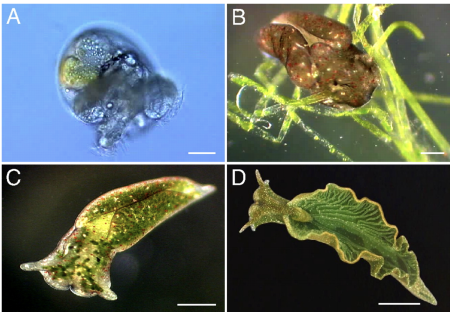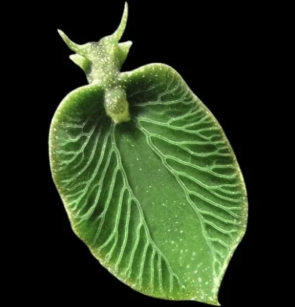
https://www.youtube.com/watch?v=pAMP8erryKE
https://www.pnas.org/doi/10.1073/pnas.0804968105
https://www.nature.com/articles/sdata201922
La limace de mer Elysia chlorotica ne se coupe pas la tête comme Elysia marginata mais fait aussi de la photosynthèse! Elle vit en eaux peu profondes le long de la côte des États-Unis. Lorsque le soleil brille, elle s'étale comme une feuille pour récupérer le maximun de lumière indispensable à la photosynthèse. Jeune, elle se nourrit de l'algue Vaucheria littorea, et devient ainsi verte grâce aux chloroplastes qu'elle lui vole, Elle pratique donc aussi la Kleptoplastie soit le vol de chloroplastes! Les chloroplastes sont présents dans les cellules de son appareil digestif très ramifié. Elle n'a donc plus besoin de manger d'algue car elle produit elle-même sa propre matière organique (pour produire de l'énergie) à partir de lumière, d'eau et de dioxyde de carbone.

